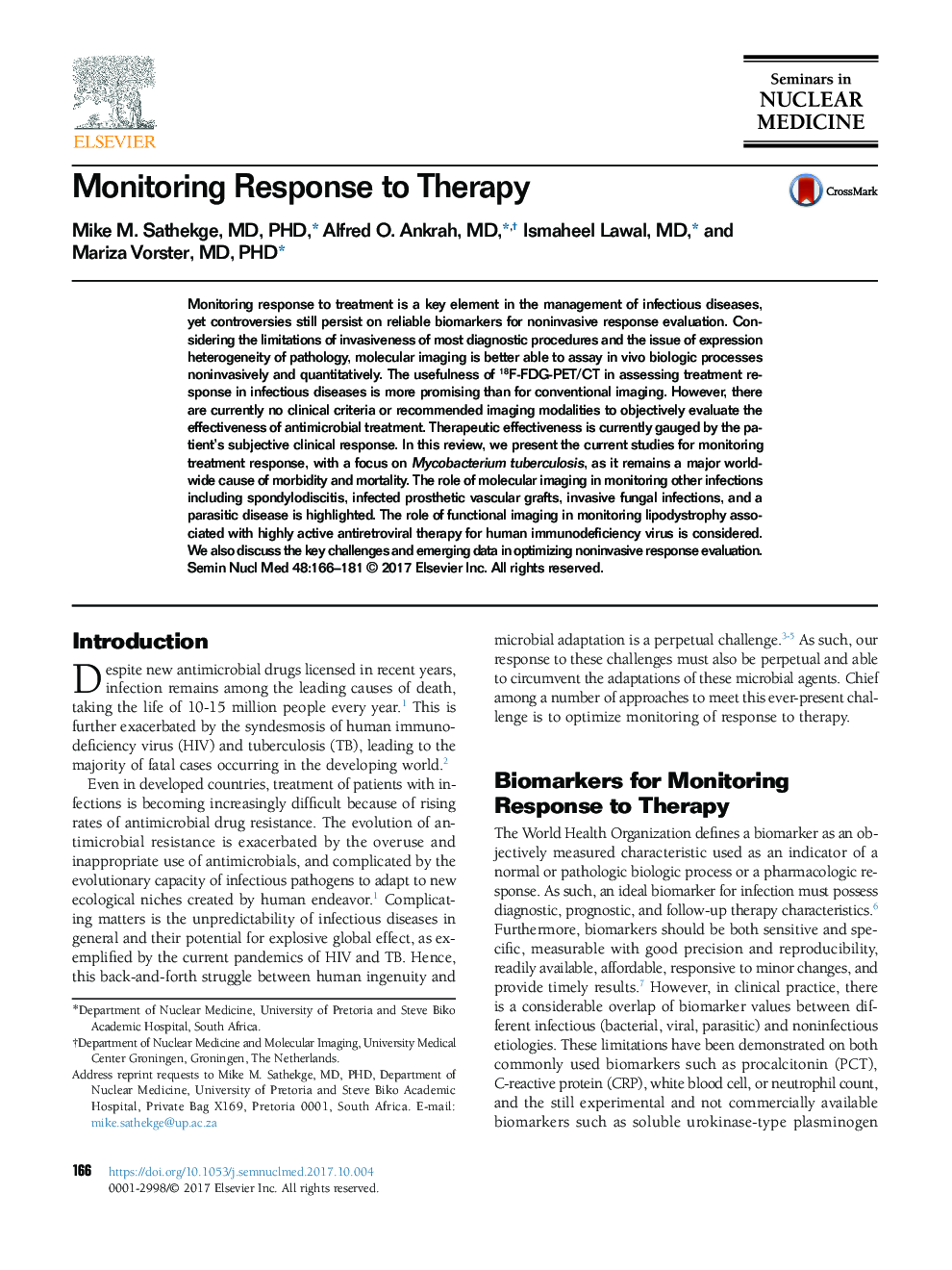| Article ID | Journal | Published Year | Pages | File Type |
|---|---|---|---|---|
| 8826190 | Seminars in Nuclear Medicine | 2018 | 16 Pages |
Abstract
Monitoring response to treatment is a key element in the management of infectious diseases, yet controversies still persist on reliable biomarkers for noninvasive response evaluation. Considering the limitations of invasiveness of most diagnostic procedures and the issue of expression heterogeneity of pathology, molecular imaging is better able to assay in vivo biologic processes noninvasively and quantitatively. The usefulness of 18F-FDG-PET/CT in assessing treatment response in infectious diseases is more promising than for conventional imaging. However, there are currently no clinical criteria or recommended imaging modalities to objectively evaluate the effectiveness of antimicrobial treatment. Therapeutic effectiveness is currently gauged by the patient's subjective clinical response. In this review, we present the current studies for monitoring treatment response, with a focus on Mycobacterium tuberculosis, as it remains a major worldwide cause of morbidity and mortality. The role of molecular imaging in monitoring other infections including spondylodiscitis, infected prosthetic vascular grafts, invasive fungal infections, and a parasitic disease is highlighted. The role of functional imaging in monitoring lipodystrophy associated with highly active antiretroviral therapy for human immunodeficiency virus is considered. We also discuss the key challenges and emerging data in optimizing noninvasive response evaluation.
Related Topics
Health Sciences
Medicine and Dentistry
Radiology and Imaging
Authors
Mike M. MD, PHD, Alfred O. MD, Ismaheel MD, Mariza MD, PHD,
